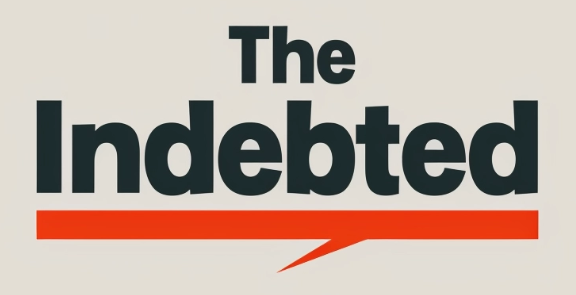If you’re looking for ways to reduce your debt, you may want to consider a no-spend challenge. This challenge involves cutting out all non-essential spending for a set period of time, which can help you save money and pay off debt faster. In this article, I’ll explain what a no-spend challenge is, how it works, and why you should consider doing one.
A no-spend challenge can be a great way to jumpstart your debt reduction efforts. By eliminating unnecessary expenses, you can free up more money to put towards paying off your debts. Additionally, a no-spend challenge can help you develop better spending habits and become more mindful of your money. You’ll learn to differentiate between wants and needs, and you may find that you’re able to live more simply and happily with less.
Understanding the No-Spend Challenge
Defining the No-Spend Challenge
The No-Spend Challenge is a financial exercise that involves temporarily cutting out non-essential expenses from your budget. The primary aim is to identify and eliminate unnecessary spending habits and focus on just the essentials like rent, utilities, and groceries, while putting all extras on hold. This means pausing expenditures on anything from dining out and impulsive shopping to subscriptions and entertainment.
Benefits of Reducing Spending
The No-Spend Challenge can help you develop better spending habits and reduce your debt. By taking a break from non-essential spending, you can learn to differentiate between wants and needs and prioritize your expenses. This exercise can also help you identify areas where you can cut back on spending and save money in the long run.
Reducing your spending can also help you pay off your debt faster. All the money you save during your No-Spend Challenge is extra capital to put towards your financial goals, such as paying off debt. In addition, during your No-Spend Challenge, you won’t be spending money on your credit cards, which will help prevent you from going further into debt.
Setting Up Your No-Spend Challenge
If you’re serious about reducing your debt, then a no-spend challenge is a great way to get started. Here are some steps to help you set up your no-spend challenge.
Establishing Ground Rules
The first step is to establish ground rules for your no-spend challenge. This means deciding what you will and won’t spend money on during the challenge. Some people choose to only spend money on necessities, while others include additional rules like not eating out or not buying clothes. Whatever rules you choose, make sure they are clear and specific.
Identifying Non-Essentials
The next step is to identify non-essential items that you can cut out during the challenge. This might include things like buying coffee, going out to eat, or subscribing to streaming services. Make a list of these items and decide which ones you can cut out completely and which ones you can reduce.
Planning for Necessities
While you’re cutting out non-essential items, it’s important to plan for necessities. This might include things like rent, utilities, and groceries. Make a list of all the necessary expenses you will have during the challenge and create a budget to make sure you have enough money to cover them.
Budgeting and Tracking Progress
As with any financial goal, creating a budget is a crucial step in a no-spend challenge. By setting a budget, you can identify your essential expenses and determine how much money you can save during the challenge. I recommend using a budgeting app, such as Mint or YNAB, to help you track your spending and stay on track with your goals.
Creating a Budget
To create a budget, start by listing your monthly income and essential expenses, such as rent, utilities, and groceries. Then, identify any non-essential expenses, such as dining out or entertainment, and determine how much you can realistically cut back during the challenge. Be sure to set aside some money for unexpected expenses, such as car repairs or medical bills.
Monitoring Spending Habits
During the challenge, it’s important to monitor your spending habits closely. Keep track of every penny you spend and review your progress regularly to ensure you’re staying on track with your budget. If you find yourself overspending in a particular category, adjust your budget accordingly.
You can monitor your spending habits using a spending tracker. Many budgeting apps have built-in spending trackers that allow you to see exactly where your money is going. You can also create your own spending tracker using a spreadsheet or pen and paper.
Adjusting Goals and Expectations
It’s important to be realistic about your goals and expectations during a no-spend challenge. While it’s great to aim for a full month of no spending, it may not be feasible for everyone. If you find yourself struggling to stick to the challenge, consider adjusting your goals and expectations.
For example, you may decide to limit your non-essential spending to a certain amount each week instead of cutting it out entirely. Or, you may decide to extend the challenge to two months instead of one. The key is to find a balance that works for you and your financial situation.
Strategies for Success
When embarking on a no-spend challenge, it is important to have a plan and strategies in place to ensure success. Here are some tips that I have found helpful:
Avoiding Temptations
One of the biggest challenges of a no-spend challenge is avoiding temptations to spend money. To combat this, I recommend avoiding situations that may trigger impulse buying, such as browsing online shopping sites or going to the mall. Instead, focus on free activities such as hiking, reading, or spending time with friends and family.
Utilizing Resources and Support
It can be helpful to have a support system in place when taking on a no-spend challenge. This can include friends or family members who are also participating in the challenge, or online communities and forums where you can connect with others who are working towards similar goals. Additionally, there are many resources available online, such as budgeting apps and free financial planning tools, that can help you stay on track and motivated.
Rewarding Milestones
Celebrating small milestones along the way can help keep you motivated throughout the challenge. For example, after successfully completing a week of the challenge, treat yourself to a favorite meal or activity that doesn’t involve spending money. This can help reinforce the positive changes you are making and keep you on track towards your ultimate goal of reducing debt.
Long-Term Benefits and Maintaining Financial Health
As I mentioned earlier, participating in a no-spend challenge can help you reduce debt and improve your financial situation. However, the benefits don’t stop there. There are several long-term benefits to maintaining a healthy financial lifestyle that can help you achieve your financial goals.
Improving Financial Habits
Participating in a no-spend challenge can help you identify areas where you are overspending and develop better financial habits. By tracking your spending, you can identify unnecessary expenses and find ways to cut back. Over time, these habits can become second nature, helping you save money and build wealth.
Building an Emergency Fund
One of the most important aspects of maintaining financial health is having an emergency fund. An emergency fund is a savings account that you can use to cover unexpected expenses, such as car repairs or medical bills. By participating in a no-spend challenge, you can free up money to start building your emergency fund. Over time, you can grow your emergency fund to cover several months’ worth of expenses, giving you peace of mind and financial security.
Sustaining Lifestyle Changes
Participating in a no-spend challenge can help you make lasting lifestyle changes. Cutting back on unnecessary expenses can help you learn to live within your means and prioritize your spending. This can help you achieve your long-term financial goals, such as buying a home or saving for retirement. By maintaining these lifestyle changes, you can continue to save money and build wealth over time.
Participating in a no-spend challenge and maintaining a healthy financial lifestyle can help you achieve your financial goals and improve your overall financial health. From building an emergency fund to improving your financial habits, the benefits of a healthy financial lifestyle are numerous.





